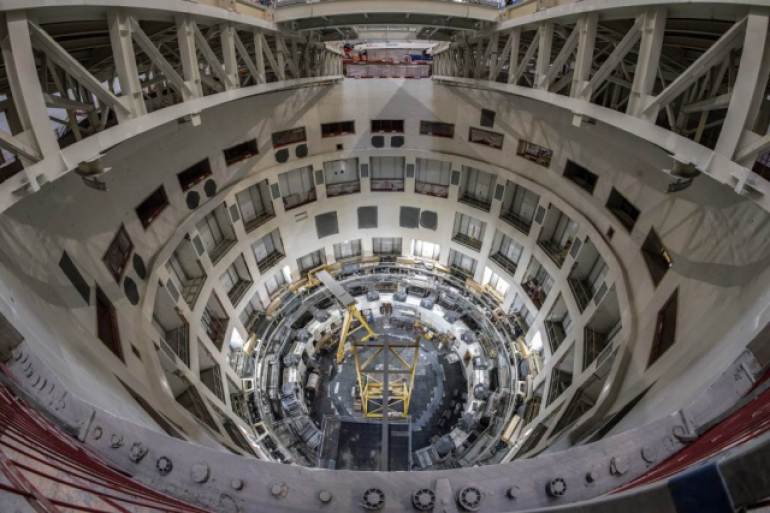The process of installing the first parts of the fusion nuclear reactor, the largest of its kind in the world, began last week in southern France, entering the process of accomplishing the largest technical project in the history of mankind.
This stage is considered critical a decade and a half after the start of construction work, in order to produce clean and irreversible energy in the future.
Over a period of two days, the base of the reactor cooler was placed, which is a thick steel container with a weight of 1250 tons, representing the bottom of a huge metal can that will later contain the rest of the main reactor parts.
Small sun dream
The ITER project aims to build a nuclear reactor to generate energy in the same way that the sun and the rest of the stars produce their energy by combining light chemical elements such as hydrogen to form heavier elements.
In contrast to the fissile nuclear reactors that currently circulate and that produce energy by breaking up heavy elements such as uranium and plutonium, the fusion reactor does not produce any radioactive or harmful materials for the environment and living organisms, in addition to the quantities of energy that are produced dozens of times greater.
The first fusion reactor was designed in the 1950s "tokamak" type, invented by Soviet scientists Andrei Sakharov and Igor Tamm.
The fundamental principle of the action of this fusion reactor depends on converting isotopes of hydrogen, or other light elements, to ionized plasma after electrons are removed from the nuclei of atoms by high heat, before these nuclei merge, forming heavier and absolute elements with vast amounts of energy.
To create conditions similar to those in the heart of stars, a circular vacuum chamber with a car tire is wrapped inside the fusion reactor, with a giant magnet that creates a strong magnetic field. The aim is to limit the hot plasma to a long enough period for the merging process and energy production, and then the cooling systems transfer this energy out of the reactor.
Small experimental reactors of this type have been built that have already demonstrated that nuclear fusion is possible, but it will be the first reactor capable of producing more energy than it needs to operate.
Scientists have estimated that the giant fusion reactor will be able to produce ten times the energy needed to power it.
A race against time
However, building a fusion reactor like "ITER" requires enormous technical and material capabilities to provide suitable conditions for fusion operations to take place, as in the center of the sun, where the temperature is more than 15 million degrees in addition to very high pressure.
The completion of this technical edifice required the cooperation of 35 countries which are the European Union in addition to the United States, Switzerland, Russia, China, Korea, Japan and India since the beginning of the nineties of the last century, with the monitoring of an enormous and inflated budget over time reaching more than $ 45 billion so far.
Followers of the project estimate the rate of its completion now at more than 70%, while thousands of factories around the world are working to manufacture more than ten million different pieces of the reactor with strict specifications that will be assembled like a giant "Lego" parts. Of these, 18 are massive metal coils that will form the world's largest magnet of 320 tons around the space chamber of the reactor.
The ITER team is racing against time to acquire all major fusion reactor components by the end of 2021, to meet the programmed deadline for operating the mega-device in December 2025.
And if all goes well, the first experimental power plant that uses nuclear fusion will not be ready by at least 2035, which means that it will not be possible to build commercial reactors to produce energy before the middle of this century.
Although the major obstacles - which faced the project from its beginnings - made it go slowly, it is advancing steadily, experts say.
Nuclear fusion is the only environmentally friendly way to generate large amounts of electricity, day and night, without relying on fossil fuels or conventional nuclear energy that is dangerous to the environment.

